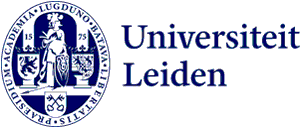
These students studied Byzantine Rome... in Rome: ‘It was an immersive experience’
Professor Joanita Vroom, together with the Royal Netherlands Institute in Rome (KNIR) offered the course Byzantine Rome in September 2023. The course, co-taught by Vroom, Letty ten Harkel and various guest lecturers, investigated the transition of the city of Rome from Late Antiquity to the Middle Ages, with an emphasis on cultural and socioeconomic developments. Notably, the course takes place in Rome itself. ‘We got to see a side of Rome that is not usually seen.’ We speak with participating students Nándor, Lisa, and Filip.
Shifting narratives
The course was two weeks long and took place from 4 to 15 September at the building of the KNIR, near the Villa Borgese in Rome. ‘Its main aim,’ Nándor states, ‘was to show how the city of Rome, and Italy at large, changed during the early Middle Ages, after the fall of the Western Roman Empire.’ No longer the capital of the world, as the Romans thought of it, the city got a new status. ‘There is this interesting shifting narrative in terms of how the people, the church and the ruling class saw Rome. This course gave us a glimpse into that process.’

Visiting sites
Every day was divided into a lecture part and an excursion part. ‘A variety of topics was touched upon,’ notes Lisa. ‘During the excursions we visited sites that reflect the changes from Roman to Byzantine times, for example in architecture or art in churches. But we also saw continuity.’
Here the strength of the course becomes apparent. 'It is a very nice immersive experience,’ Nándor explains. ‘Quite remarkable to see these medieval sites not from a tourist eye, but from the perspective of professionals, our teachers, who guided us around archaeological sites and functioning churches built a 1000 years before.’ The students witnessed people praying in front of an altar piece that had been there for more than a millennium. ‘It reminded us why we are studying the past.’

Completeness
This was not the only advantage of visiting the churches they were being taught about. ‘In my opinion,’ Filip adds, ‘to study church architecture, just from books and visual aids, you do not really study the arts in its completeness.’ He conjures up the image of the light, the glitter of the gilded surfaces, and the sounds penetrating the stained glasses. ‘This impression is something that you only get from visiting the building itself.’
Backgrounds
The students following the course had a variety of backgrounds, ranging from Archaeology, Philosophy, Psychology, as well as History, Law, and International Relations, or a combination of disciplines. ‘During each excursion one of the students gave a presentation on the place they visited,’ Lisa explains. ‘Due to the variety of students, this gave us different, multidisciplinary perspectives.’

Recommendations
All three students would heartily recommend the course. ‘I think it is a unique experience,’ Lisa nods. ‘Learning about the history of a place, and then visiting it in person on the same day. So immersive to learn about this period and the city of Rome, while being there in person.’
Filip agrees. ‘We got to see a side of Rome that is not usually seen. Most visitors go for either the ancient or the Renaissance eras. We have seen sites that are not as touristic and well-known. The vast majority of the sites that we visited consisted of small churches built in the early Middle Ages.’ ‘For example the Basilica di Santa Prassede.’ Nándor adds, ‘Not visited by tourists, but it features an amazing 9th century mosaic.’
The course challenges the existing narrative that there was a period of decay after the fall of the Western Roman Empire, which was appreciated by the students. ‘There are certainly arguments that support that narrative,’ Lisa notes, ‘but there are also arguments against it, and those are not looked at that much. There is this view of medieval Rome lying in rubble, and this is certainly not the case. Right in the heart of the city, the Roman Forum continued to be in use.’
About the course
‘Byzantine Rome’ is placed in the context of Medieval Italy and the wider Mediterranean world. Connections between Rome and Constantinople and the Byzantine ‘East’, and other Mediterranean regions were discussed. What continued, and what changed in this period? What were political, religious, economic and cultural links to sites within and beyond the Italian Peninsula? How do we see historical economic, and societal shifts and developments back in the archaeological record?
